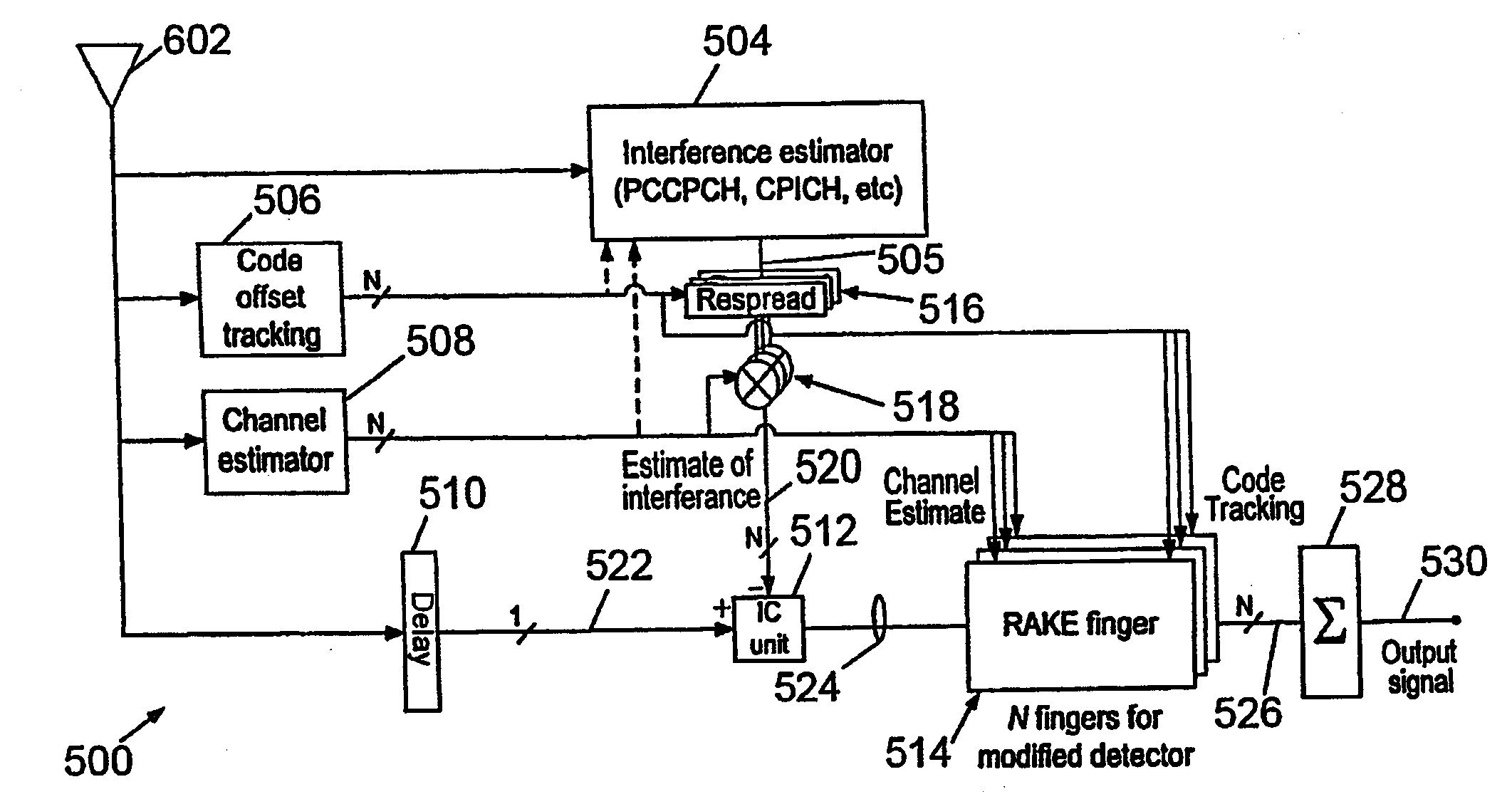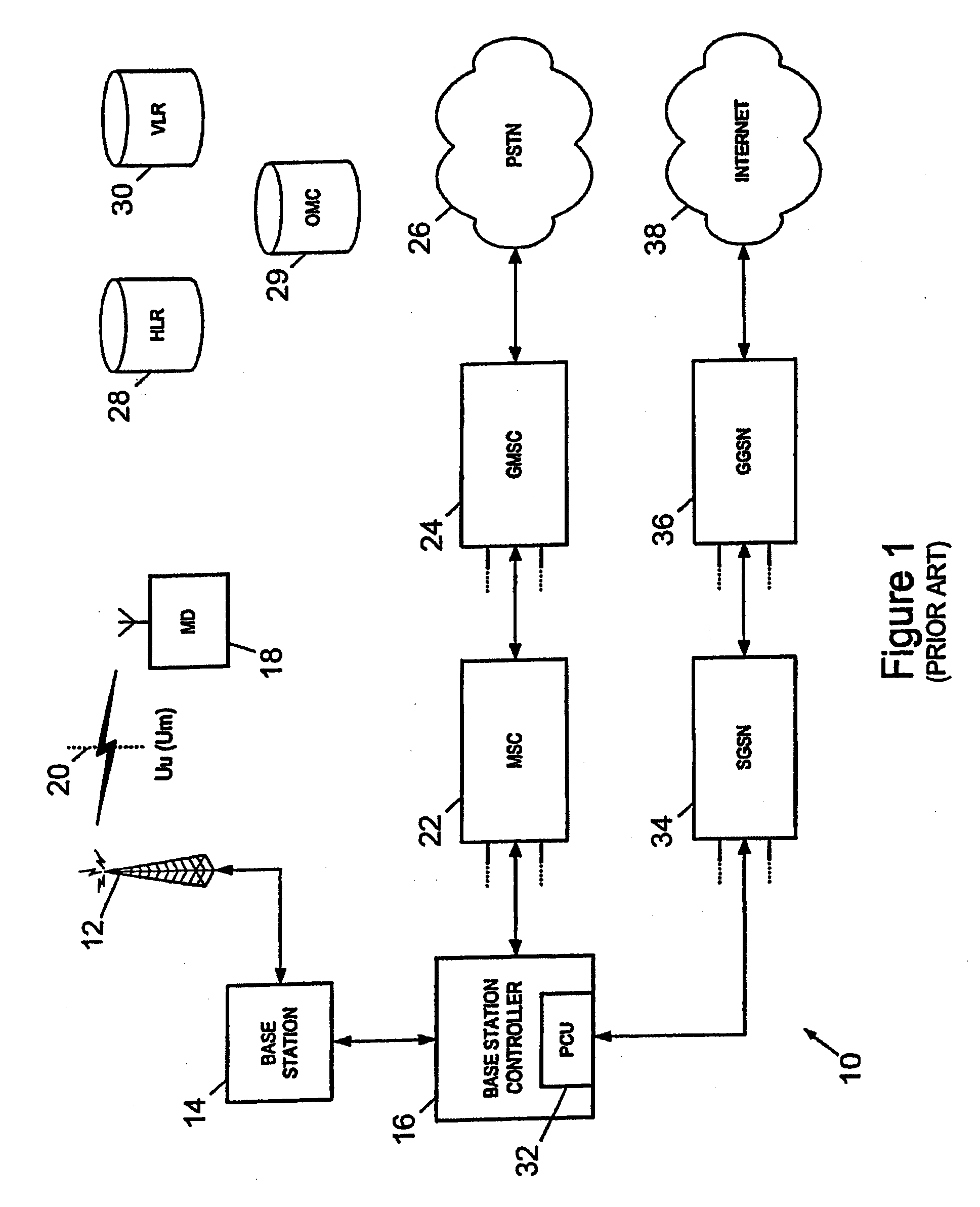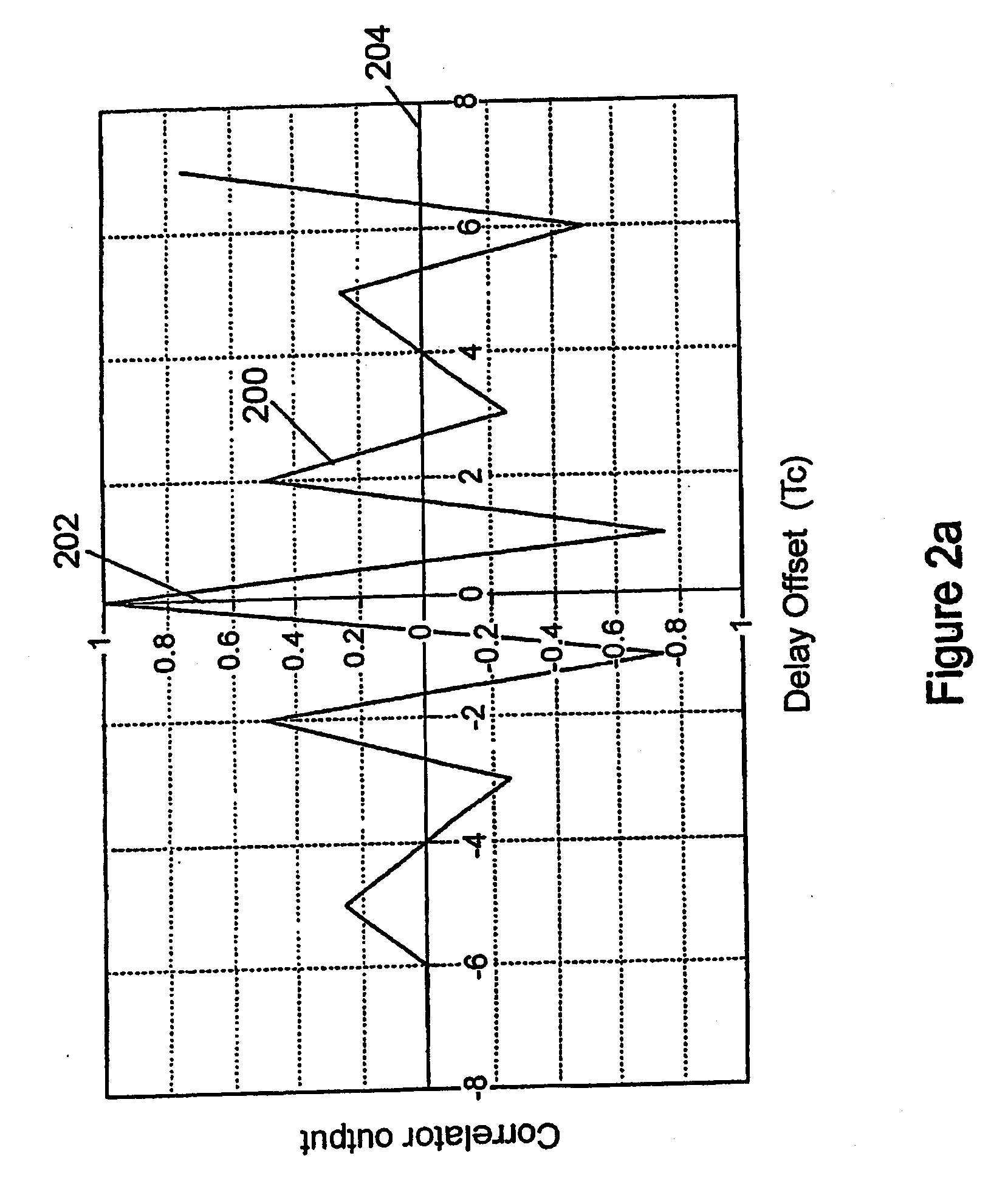Receiver processing systems
a technology of receiver processing and receiver, applied in diversity/multi-antenna systems, transmission monitoring, wireless communication, etc., can solve the problems of multiple access interference rise, cdma system is limited by uplink capacity, 3g cdma system may be limited by downlink capacity,
- Summary
- Abstract
- Description
- Claims
- Application Information
AI Technical Summary
Benefits of technology
Problems solved by technology
Method used
Image
Examples
Embodiment Construction
[0074] Without limitation, the types of channel interference from which can be cancelled in the terminal without knowledge of additional spreading codes are, in order of increasing complexity:
[0075] 1. Common channels with a known spreading code and known or no modulation such as CPICH and SCH. As the modulating signal is known, this is the simplest approach.
[0076] 2. Common channels with a known spreading code modulated by data, such as PCCPCH. To cancel the interference generated by these channels, the channel must be despread and demodulated to determine the transmitted data and then respread to form an estimate of the transmitted signal before the interference can be suppressed from the desired signal. However these channels generally have a significantly higher power and that of the desired dedicated channel from which the interference is to be suppressed, typically 5 dB higher, making it relatively straightforward to detect the channel or channels and suppress the interferen...
PUM
 Login to View More
Login to View More Abstract
Description
Claims
Application Information
 Login to View More
Login to View More - R&D
- Intellectual Property
- Life Sciences
- Materials
- Tech Scout
- Unparalleled Data Quality
- Higher Quality Content
- 60% Fewer Hallucinations
Browse by: Latest US Patents, China's latest patents, Technical Efficacy Thesaurus, Application Domain, Technology Topic, Popular Technical Reports.
© 2025 PatSnap. All rights reserved.Legal|Privacy policy|Modern Slavery Act Transparency Statement|Sitemap|About US| Contact US: help@patsnap.com



